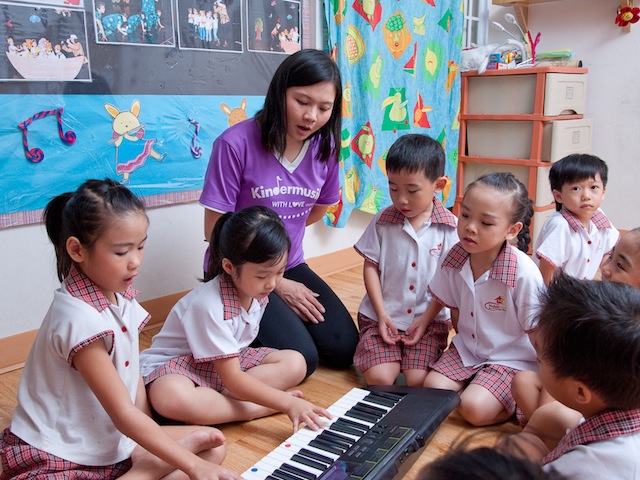
Special Projects
Make-Believe Play ‘Restaurant Project’ 2011
Our make-believe play workshops began with a themed story as a platform for children to kickoff a discussion about restaurants. Armed with ideas and knowledge, children tried their hands at organizing and managing a small make-believe restaurant.
In the course of running their little restaurant, children learnt a myriad of skills such as language, social, thinking and creativity skills. Best of all, they had loads of fun learning all these skills through make-believe play!
Build A City Project 2012
In today’s era of highly modernized and competitive society, the ability to work harmoniously as a team is of paramount importance. This project work emphasized on learning teamwork skills, problem solving and divergent thinking. It began with an informative session as a platform for children to kickoff a discussion about their project. Armed with ideas and knowledge, children work as a team to build a miniature city.
Children’s communication skills were enhanced during the presentation and this has been one of the strongest evidences to demonstrate the school’s efforts to cultivate creative communicators and thinkers.
Parents and family members were invited at the end of the project to give names to the roads/building, and added life to the city!
Story Sequencing 2013
Through the activity of creating their own illustrations and stories, the children learned about the different aspects of composition. They understood that the beginning of a story requires an introduction to the characters (who) and the location (where). The body of the story explains the actions that occur (what) and the ending requires a conclusion to how the characters resolved the problem or how they felt. While working in teams, the children also learned about supporting and encouraging their teammates.
Patterns in Nature 2014
This was a unique project that combined nature with technology. We used the internet to research for the types of patterns that can be found in nature such as spirals, dots, spots, zigzag, waves, etc. The children reproduced these patterns in their drawings and used these patterns to create pebble collages. The most popular patterns was dots and spirals. We also visited a park to look for patterns in plants, insects and animals. The children played an active role in their learning by documenting their findings through photographs. They also learned about three new patterns: blotches, speckled and symmetrical. The final part of the project involved creating a PowerPoint presentation to document the patterns each child had found. Everyone took turns to create a PowerPoint slide and practiced using the mouse to select, drag, paste their pictures and choose colors for the borders. They also practiced typing by using the keyboard to label their pictures with the names of the patterns.
ECDA Innovation Guidance Projects
We believe that fostering a love of nature will add immensely to the aesthetic development of young children and will give them a gift which can make their lives more meaningful and joyful throughout both childhood and adult. Hence, in collaboration with Design Centre Singapore and ECDA, the yearlong project that spanned from May 2013 to March 2014 has:
- Fostered a sense of wonder in our children in their early childhood years.
- Cultivated an appreciation for the beauty and mystery of the natural world.
- Provided opportunities to experience the joy of closeness to nature.
ECDA Innovation Guidance Project (IGP) 2014: ‘Electric Corner’ in collaboration with ECDA and Science centre Singapore May-Sept 2014. This project was shared during the ECDA Childcare Conference 2014 Concurrent Session and Nobleland is proud to be selected as a Mentor for the ‘Electricity Corner’ IGP in 2015.








